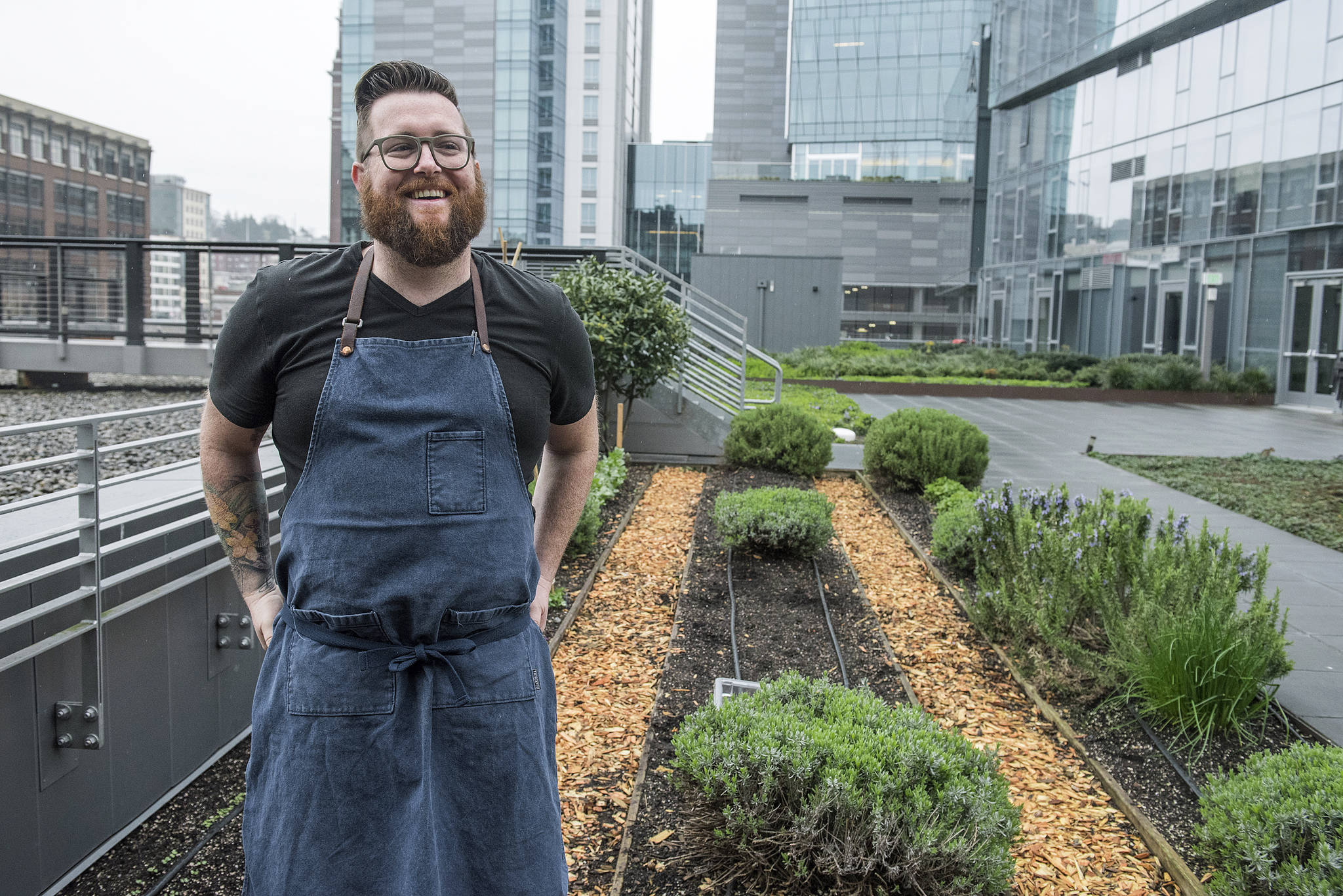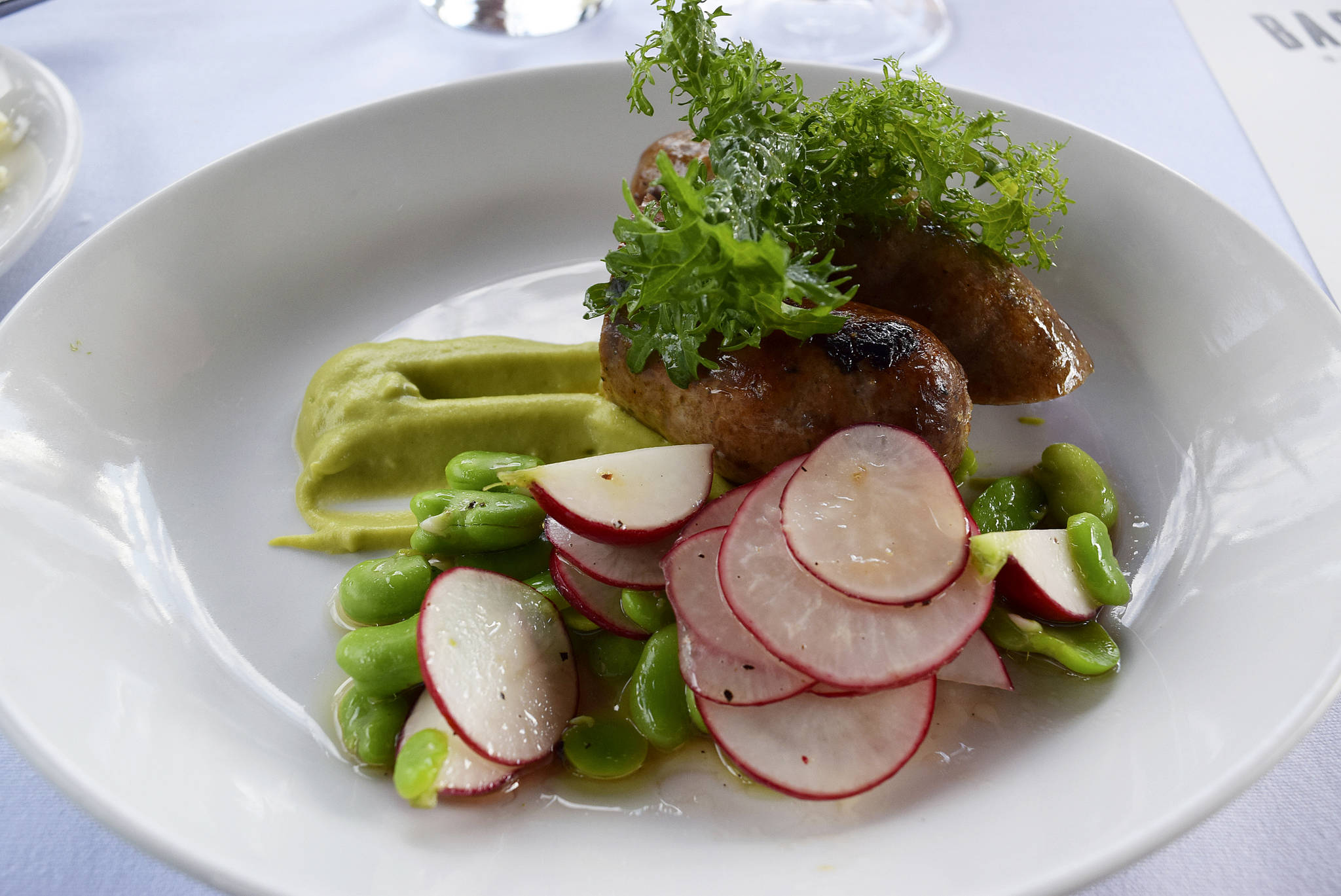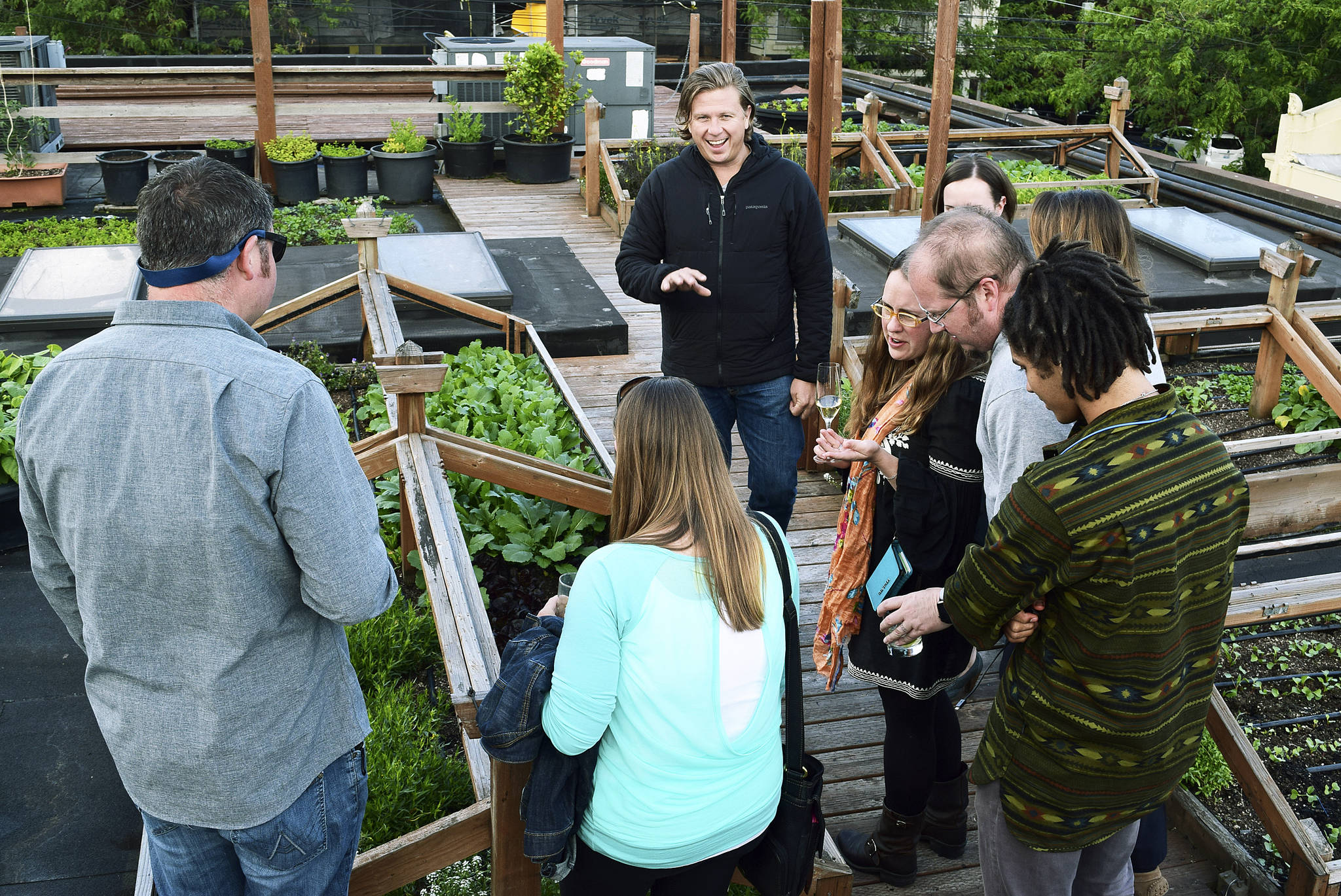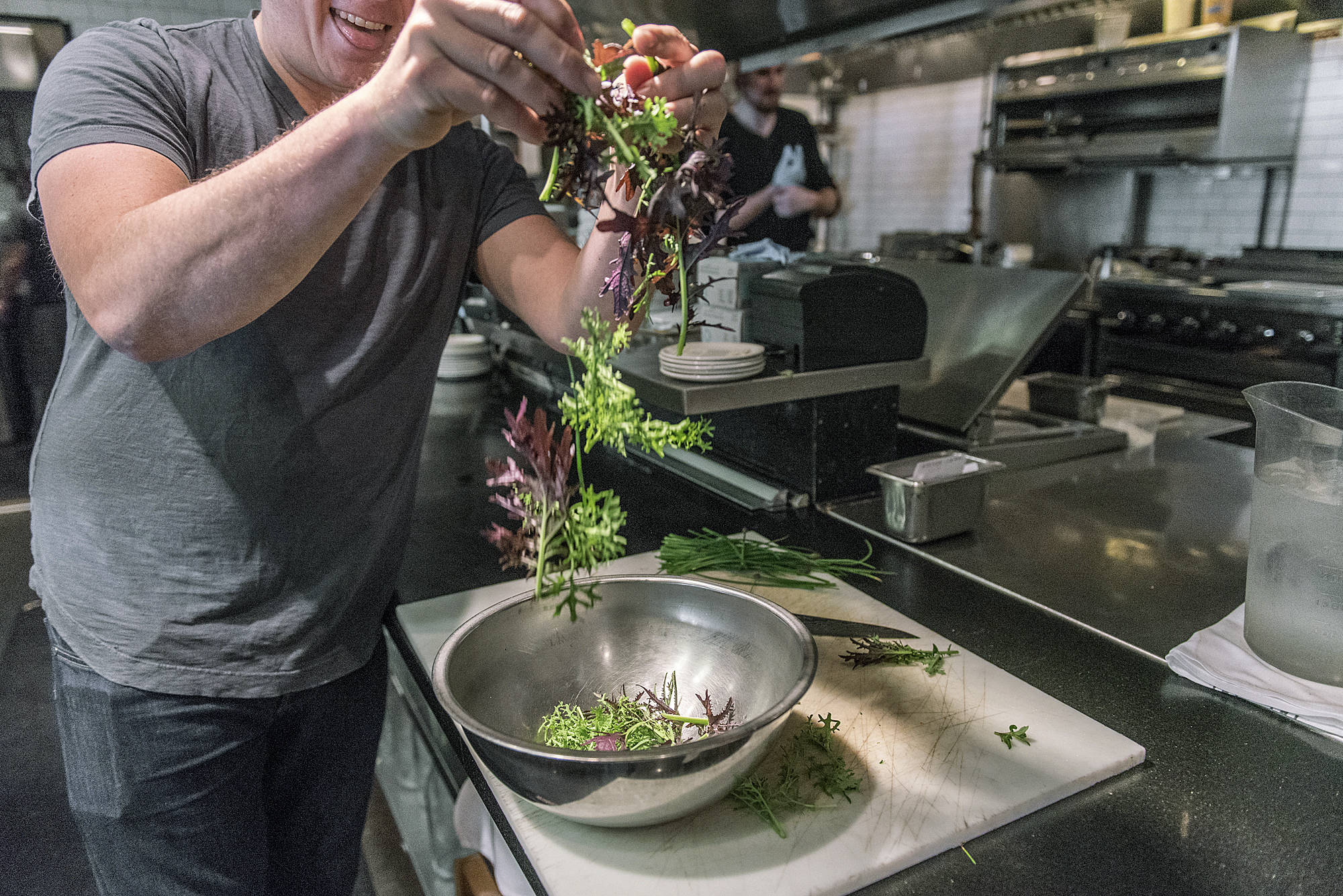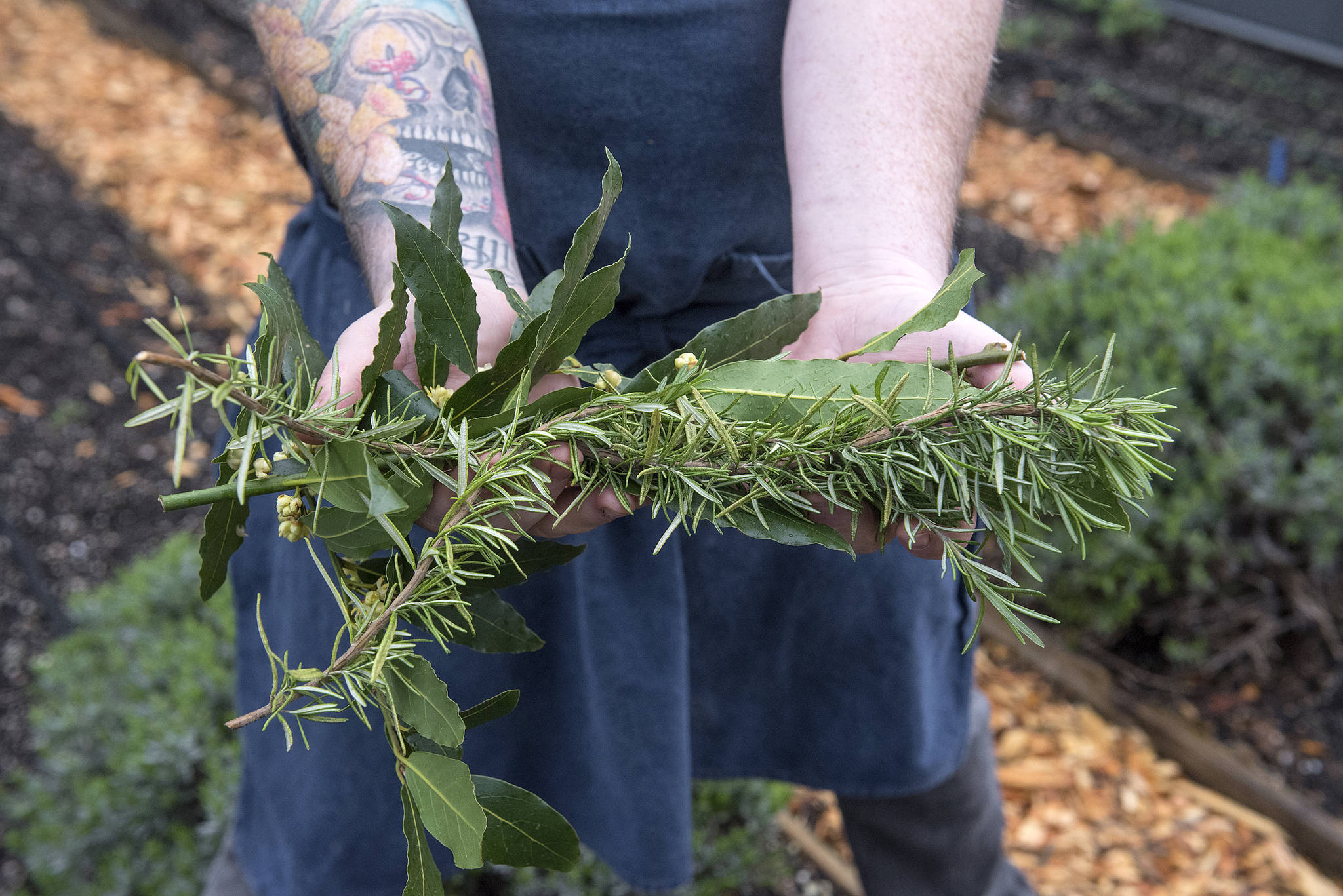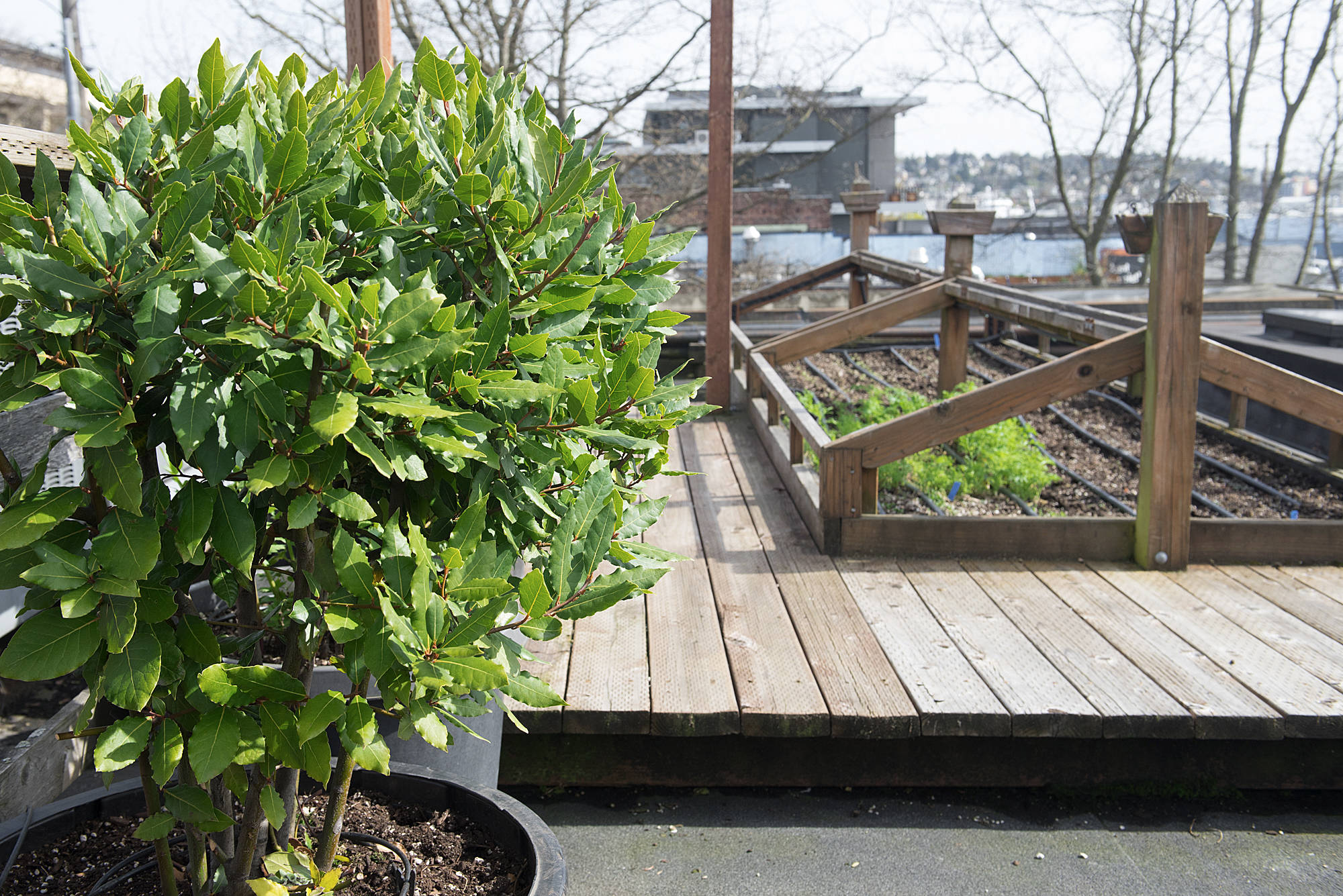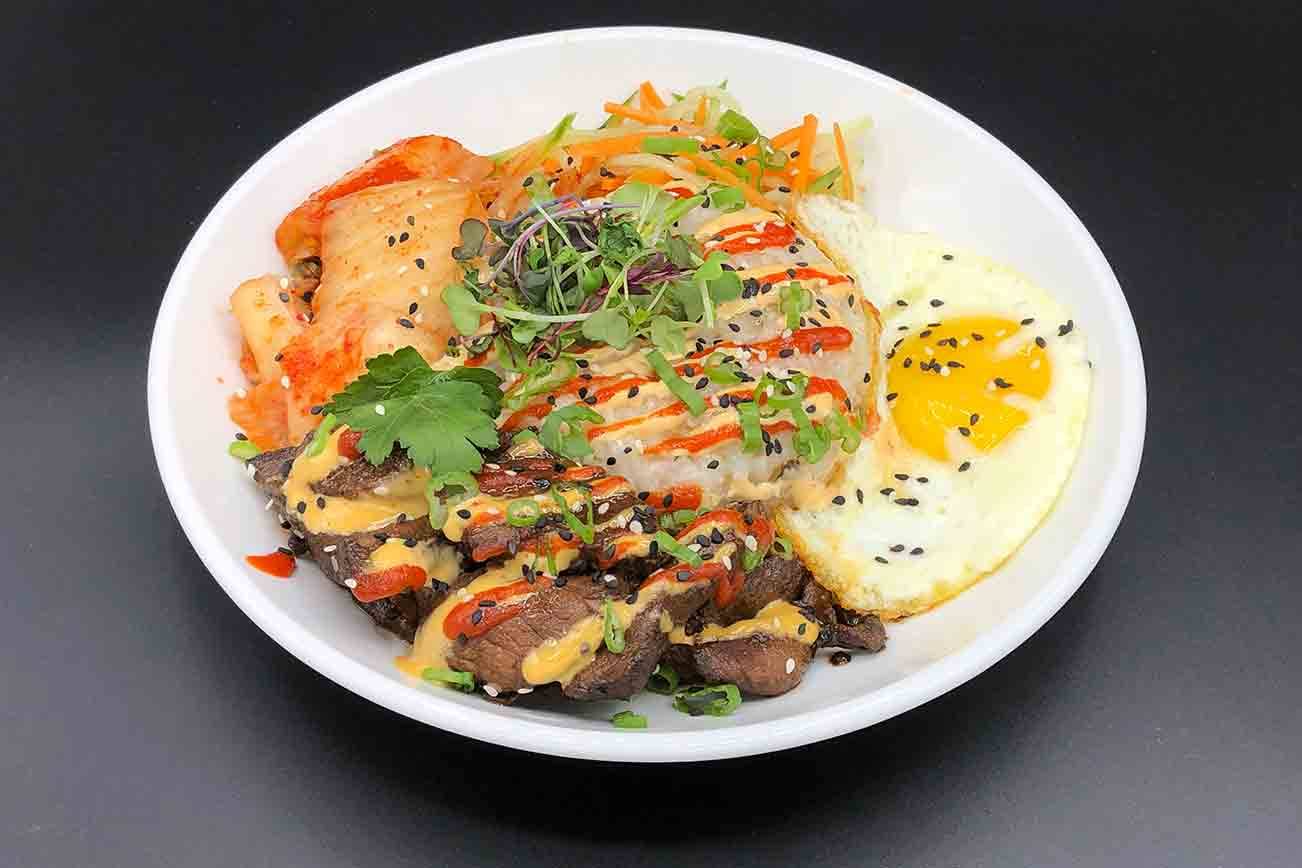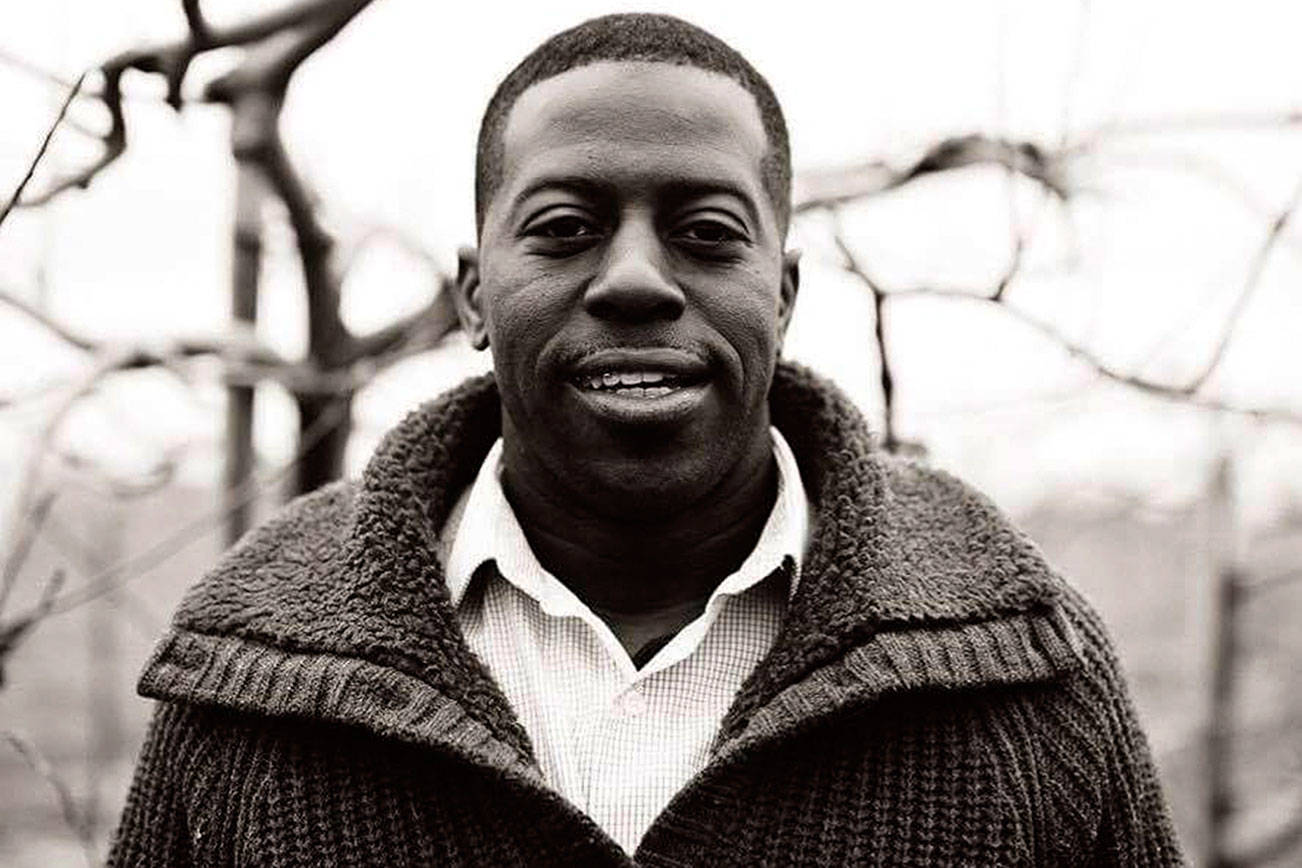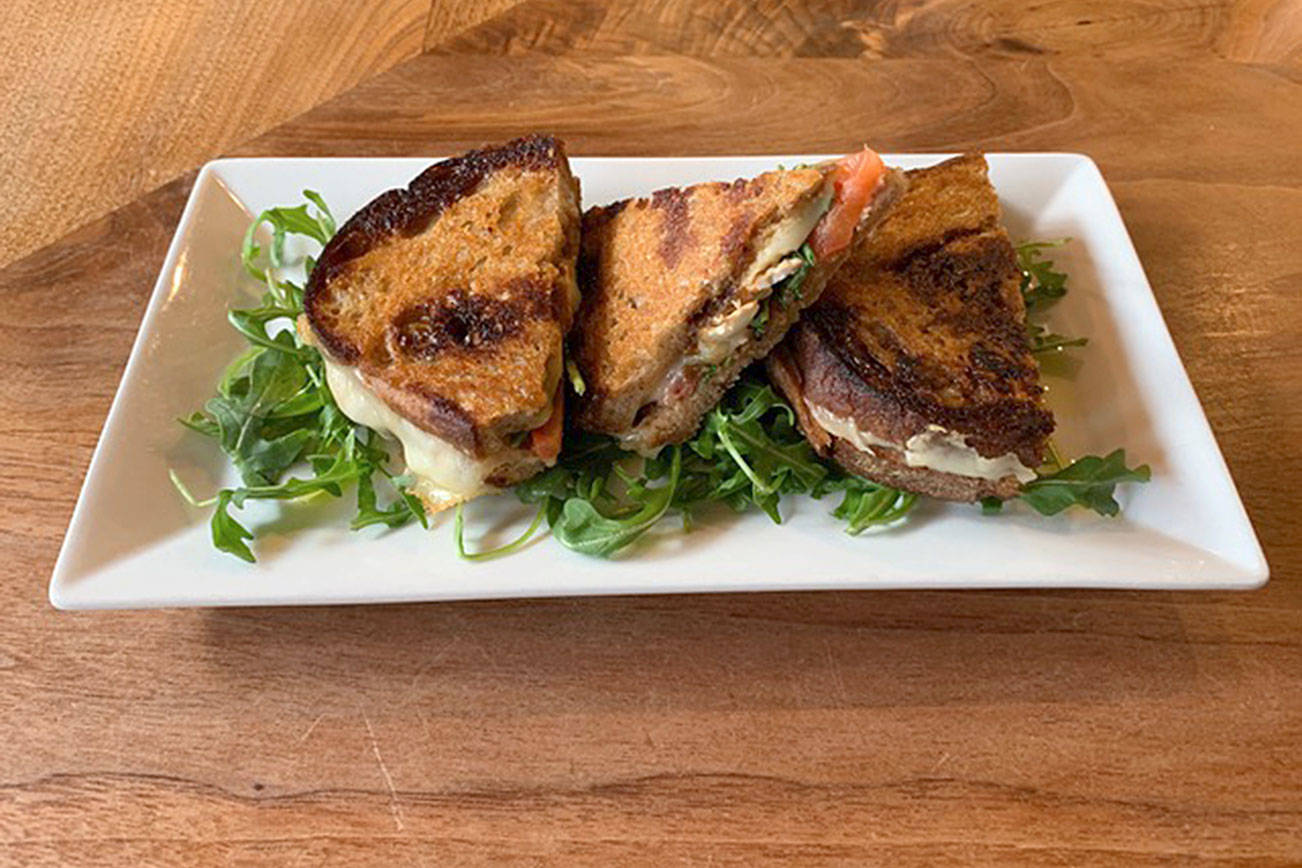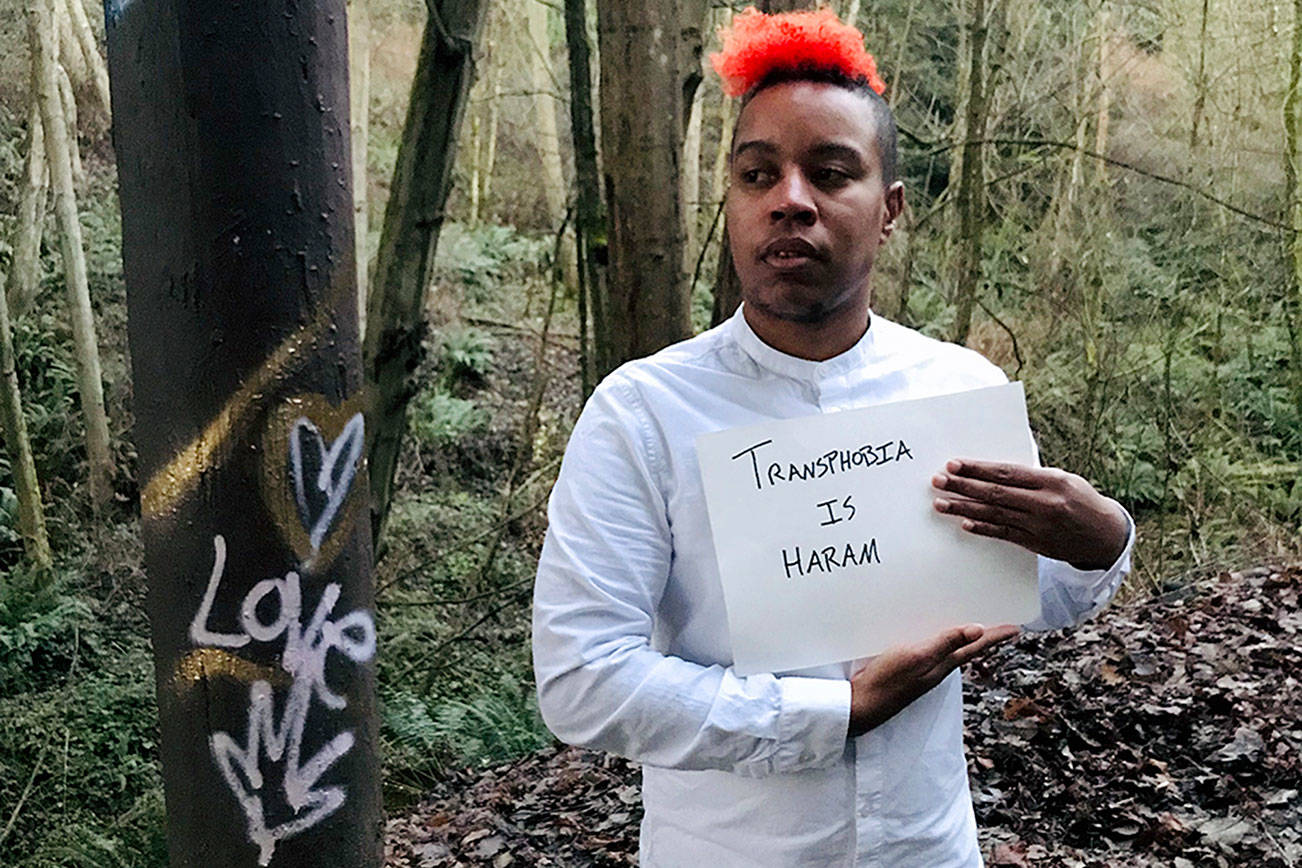These days, more and more people care about what goes into their bodies—and not just caloric counts or gluten content. Diners want to know exactly where the bite of food on their fork staring them in face came from. What’s its origin story? Who grew corn that fed the chicken for this sandwich? With the arrival of the Information Age, people can now easily research ingredients, follow the careers of chefs whose dishes they adore, and repeat mantras like “organic” and “farm-to-table.” They can visit farms, pick their own berries, and dream about their own edible flower gardens. In other words, eating is no longer a mindless exercise.
Lucky for us Seattle eaters, many of the Emerald City’s best and most progressive-minded chefs care about all this too. And some have even gone as far as devoting the roofs of their establishments to ultra-local-sourcing menu ingredients. Sitting stories above popular Emerald City thoroughfares, gardens are growing fresh flavors for diners. Chefs harvest the greenery for the restaurants directly below—popular spots like Bastille Café & Bar and Quality Athletics. “If you taste something from a garden versus something that’s been cut a week prior, there is no contest,” says restaurateur and chef Josh Henderson. “Freshness always wins out.”
Henderson, whose collection of well-known establishments includes the upscale American bistro/sports bar Quality Athletics, says keeping a garden on the roof of the Pioneer Square spot isn’t a matter of saving money (in fact, it likely costs more), but the process allows him and his chefs to tailor what grows to their exact specifications. Quality Athletics’ garden, roughly 15 by 35 feet, grows six to seven varieties of plants at any given time, including tomatoes, carrots, and herbs. Ingredients like parsley, mint, and bay leaves go into the joint’s specialized cocktails. And if the garden yields more than the chefs and cooks can consume, Henderson says other restaurateurs come by to stock up.
Bastille in Ballard has taken the rooftop garden to the next level. Since 2009, the French restaurant has made the most of its 1,200-square-foot garden by growing leafy greens, peas, anise, peppers, edible flowers, carrots, and herbs. These ingredients show up in about half the menu items, and almost always end up in the Bastille’s specials during the warmer months. According to spokesperson Erica Waliser, the French restaurant decided to build up its rooftop garden because of the flavor and ingredient diversity it offered its kitchen.
But the piece de resistance for Bastille is the four-course rooftop garden dinners the eatery offers on Monday and Tuesday nights, June through September. While pricey ($175 per diner), it’s a unique dining experience that includes a guided tour of the plants, some of which grow in charming converted kiddie-pool planters. From Waliser’s perspective, the dinners prove just how local a meal can really be—from soup to honey-glazed nuts. “Our chef, Jason Stoneburner,” says Waliser, “also harvests honey from bees on the rooftop. It’s always a cool experience when he does that!”
Taichi Kitamura, owner and head chef at Eastlake’s Sushi Kappo Tamura, says he instituted his rooftop terrace garden for the restaurant about six years ago to address his restaurant’s specific ingredient needs. “I’d always wanted to grow Japanese vegetables that were hard to find,” says the precise-minded sushi chef. With the garden a literal stone’s throw from the restaurant, Kitamura knows exactly when to harvest any of the dozen or so varieties of plants growing at any time. “I like getting shishito peppers from the garden,” he says. “They’re so fresh and full of flavor and sweet. You can flash-fry them with a little bit of lime juice, and it’s delicious.”
Kitamura notes that something is always about to bloom during the summer. While his restaurant focuses on fish primarily, the herbs in his rooftop garden supply that extra flavor at a cost he couldn’t get domestically. “A lot of Japanese vegetables—especially shiso—are expensive,” he says. “I’m only able to offer something like shiso lemonade or shiso mojitos because I have the garden up there.”
Sometimes the herbs aromatizing your cocktail or the tomatoes and leafy greens filling out your salad actually felt the same rain you did that morning walking to work. Seattle Urban Farm Company, which works with Quality Athletics, Bastille, and dozens of other local restaurants, promotes sustainable city farming, doing any necessary or required maintenance. At Sushi Kappo Tamura, there’s an irrigation system in place that offers a constant drip of water.
But not every garden servicing a popular Seattle restaurant can be found on rooftops. Poppy, the herbaceous, Thai-inspired restaurant on Capitol Hill, has a 500-square-foot L-shaped garden around its parking lot, created 10 years ago by chef/owner Jerry Traunfeld. With over 30 years of herb-growing experience, Traunfeld has authored multiple books on growing and cooking fresh herbs. “That’s kind of my thing,” he says. “So when I opened my own restaurant in Seattle, I was suddenly in an urban environment and had to figure out a way to grow my own herbs. I worked with the landlord who let me use a big part of the parking lot—we made our own herb garden.”
Traunfeld says the garden supplies hard-to-find ingredients as well as much-needed freshness for his light, flavorful plates. It also helps to educate the staff on how to cultivate their own produce, a skill they can use for a lifetime. “The Northwest is the ideal place to grow most culinary herbs,” he says. “Rosemary, thyme, oregano—hey do remarkably well here.” And while he’s been growing herbs for decades, Traunfeld always tries to plant one or two new seed varieties each year. “I started gardening as a kid,” he says. “I’ve always just been fascinated with things that grow. The whole process of planting a seed and seeing it blossom and then being able to harvest it—it’s something that I’ll always do.”
Sometimes, though, farming within city limits isn’t enough. Hitchcock Restaurant Group restaurateur/chef Brendan McGill says his menu choices are regularly inspired by his lavish and lush home gardens. Motivated by the book, Growing Vegetables West of the Cascades, McGill fell in love with gardening in the Northwest. “That book explains how our climate works,” he says, “how things grow year-round.” Beginning with a modest plot, he’s since grown his growing operation. “I found it was also really beneficial for my head,” he says. “I’d go out there with the dog, take my oldest son with me. It was meditative. You’d check on the sprouts, pull a couple weeds. And then that kind of magic happens where things grow.”
The chef says he also regularly brings produce he grows at home (collard greens, Siberian kale, shallots, etc.) and from his family farm, Shady Acres, into his restaurants like Café Hitchcock ub downtown Seattle and Bruciato on Bainbridge Island. McGill says one thing he’s learned is what “seasonal food” really means. “It’s not about what feels like spring,” he says; “I want to serve what’s honest to the season.” Hitchcock now even boasts a micro-greens garden in one of its windows.
Working in the garden demystified the growing and harvesting processes for McGill and “closed the circle” between chef and farmer for him. McGill, who has been a head chef for about 15 years, has since expanded his farm to include both livestock and employees. “I’ve grown an appreciation for it, for farming,” he says. “It’s like being a hunter, killing your own game—the respect you have for it. Until you do things yourself, you never know the intricacies of it. As a chef, I just wanted to get to know these things better.”
“I can’t imagine dedicating my life to food and not growing it,” McGill says. “That doesn’t make any sense to me anymore.”
Correction: A couple of the Hitchcock Restaurant Groups were originally mistakenly cited as using McGill’s produce and have since been updated.
